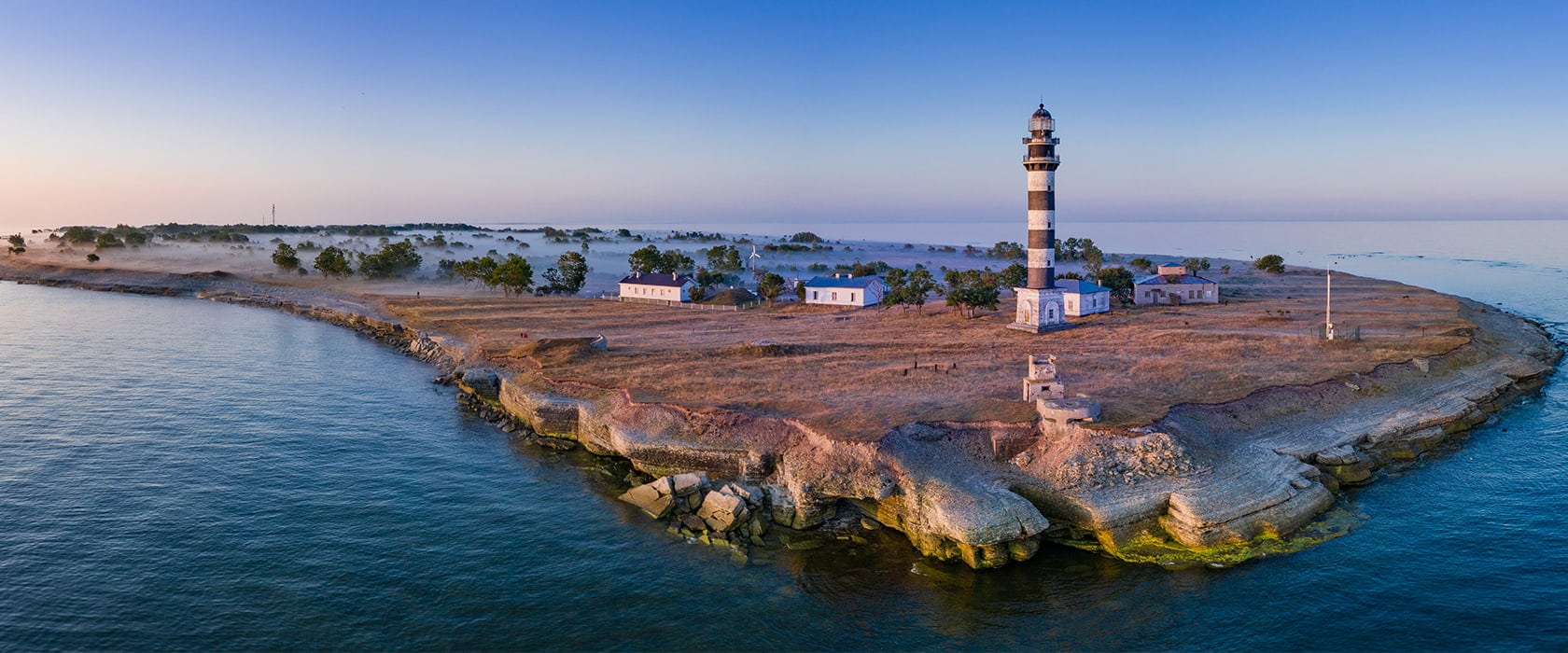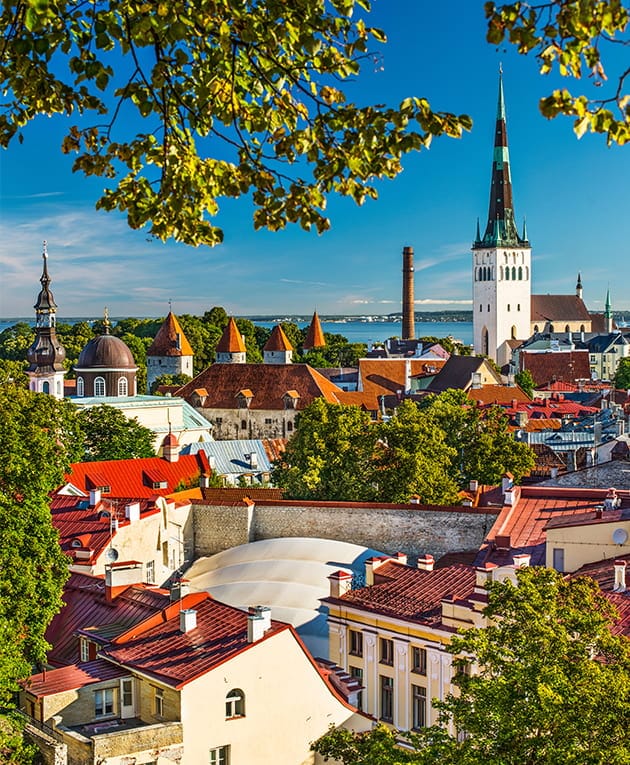-
Popular search terms
A Comprehensive Guide to Studying in:
Estonia

With a population of just 1.3 million, Estonia is one of the smallest nations in the European Union, but since joining the bloc in 2004, its economy has been one of the fastest-growing of any member state. It has also established itself as one of the most digitally-advanced countries in the world, with comprehensive Wi-Fi coverage, a pioneering e-residency scheme, and 98% of government interactions taking place online. This digital infrastructure and ease of doing business in Estonia led to the founding of at least two Estonian companies you may have heard of: Skype and TransferWise.
Unsurprisingly, studying in Estonia is also digitized. There are a plethora of online courses, over 100 of which are taught entirely in English. Although tuition in Estonia is free for many EU citizens, there are plenty of benefits to studying in Estonia for non-EU students. One benefit is the possibility to stay in the country for a period of up to nine months after graduation in order to look for a job. Ultimately, one of Estonia’s biggest advantages is that it is such a hidden gem. Could completing an MBA in Estonia be the most underrated option in the whole of Europe?

Frequently Asked Questions
FAQ
Did You Know? Fun Facts About Estonia
- 1 Public transport in Tallinn has been completely free for residents since 2013.
- 2 In 2005, Estonia became the first country in the world to adopt online voting in elections.
- 3 Estonia is considered to be the least religious country in the world, with just 14% considering religion an important part of daily life.
- 4 Estonia’s e-residency scheme allows people from anywhere in the world to start a business in Estonia without ever entering the country. It’s aimed at location-flexible individuals, such as digital nomads, freelancers, and entrepreneurs.
- 5 Estonia has the third-highest startup rate in Europe.
Which Visas & permits do i need in Estonia
EU/EEA and Swiss citizens need a right of residence to study in Estonia. All other international students will need to apply for a resident permit. EU citizens must simply register their place of residence with the local government authorities, within three months of their arrival date in Estonia. EU students are also asked to apply for an Estonian ID card within one month of obtaining their temporary right of residence. Non-EU/EEA citizens must apply for a long-term visa (D-type) visa which is usually valid for 12 months. You’ll need to apply in person at your nearest Estonian Embassy or Consulate. The application fee is EUR€100.
EU citizens are permitted to work in Estonia without a visa. Non-EU international students are permitted to work while studying on the condition that it does not interfere with their studies. Students must receive passing grades for a full load of courses and finish studies within the nominal time. International students can stay in Estonia for an additional nine months after graduation to look for a job in Estonia. After finding a job after graduation, they can use this time to apply for a temporary residence permit for work.
Banking in Estonia
Most Mastercard and Visa cards are accepted in Estonia. However, if you wish to study and work for an extended period of time, you should open an Estonian bank account. For EU/EEA students it is quite easy to open a bank account. As an EU/EEA student, you will need a passport, proof of residence, and proof of enrollment from your university. Non-EU/EEA students will have to pay EUR€200-250 for a background check. The main commercial banks in Estonia are Swedbank, SEB, Luminor, and LHV. Most banks have cards and deals aimed at students, with minimal maintenance fees.
It might also be worthwhile to explore opening an online bank account with a financial service provider like N26, Revolut, or Wise.
What do I need to know about healthcare in Estonia
If you are an EU/EEA citizen with valid health insurance in your home country, then you can apply for the European Health Insurance Card (EHIC) free of charge. Note that your EHIC will not cover travel insurance, property loss insurance, or private healthcare services. Most universities in Estonia recommend purchasing private health insurance to gain access to a larger variety of care.
Non-EU/EEA nationals must apply for private international insurance before arriving in Estonia. Some insurance providers accepted by the Estonian authorities are ERGO, Inges, Salva Kindlustuse AS, and Swisscare. Health insurance costs are typically between EUR€150-200 a year.
Housing options for students in Estonia
Many universities in Estonia offer student housing in the form of single, double, or triple rooms. University accommodation costs range from EUR€100-200 for dormitories and EUR€250-550 for private flats, including utilities. You can also find private housing with costs between EUR€200-550 per month. You will also need to pay an additional EUR€150-200 for utilities every month. Most apartments charge an initial deposit equivalent to three months’ rent. Sharing an apartment with housemates will lower your rental costs.
It is best to check with your university’s admissions office to explore the best ways to arrange accommodation. It is also advisable to speak with locals about rent prices in the area to ensure you are not being charged an inflated rate.
What are the public transport options in Estonia
In most cities in Estonia, you’ll have several options for transportation. Within the city limits, trams, trolleys, and buses are the most common means of travel. You can also take trains for longer journeys. To be able to travel with ease you will need to buy a transportation card that you can easily top up. This card, which costs EUR€2, works on all buses, trams, trolleys, and trains. Students in Estonia are eligible for a variety of travel discounts. Depending on the city you live in, you may be entitled to free travel as a student (transport is free of charge for students in Tallinn).
Taking a taxi starts at approximately EUR€2.50 with a EUR€0.65 charge per kilometer. You can also choose to rent a bicycle for an annual membership of EUR€30.
How much does a Big Mac cost in Estonia
The Big Mac Index was invented by The Economist in 1986 as an informal way of measuring the purchasing power parity (PPP) between two currencies. The price of a Big Mac in Estonia is EUR€4.11 (equivalent to US$4.42 and JP¥562). For US$50, you can buy 11 Big Macs.
Estonia is one of the cheapest places to live in Europe. The monthly average living cost for students is around EUR€300-500, with most of your budget spent on food and accommodation.